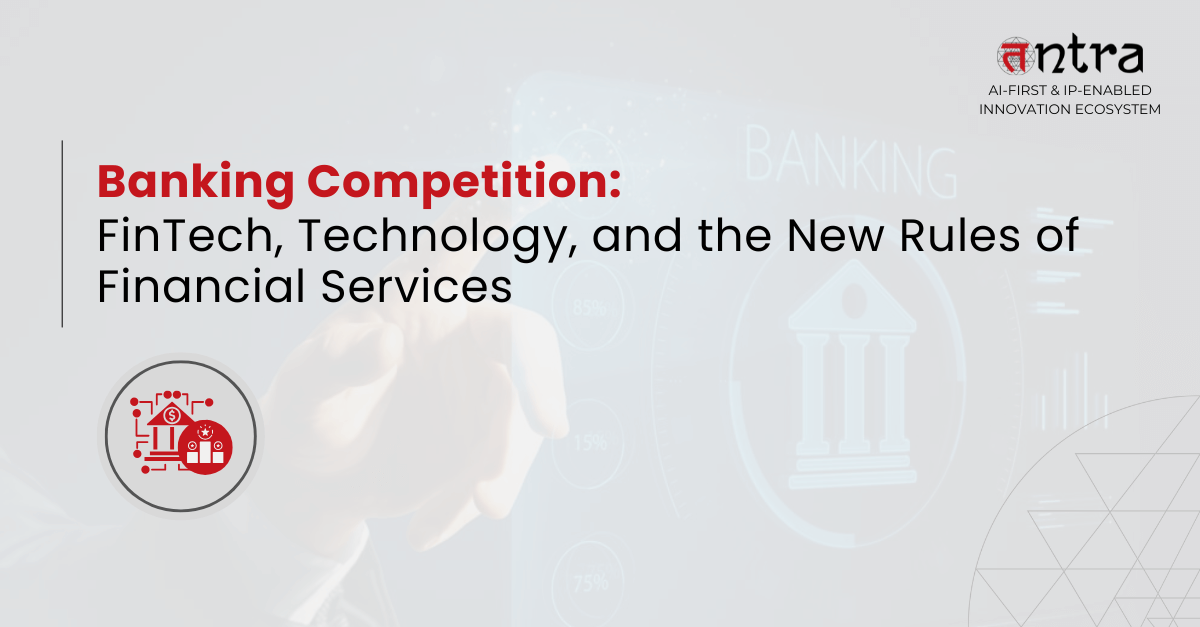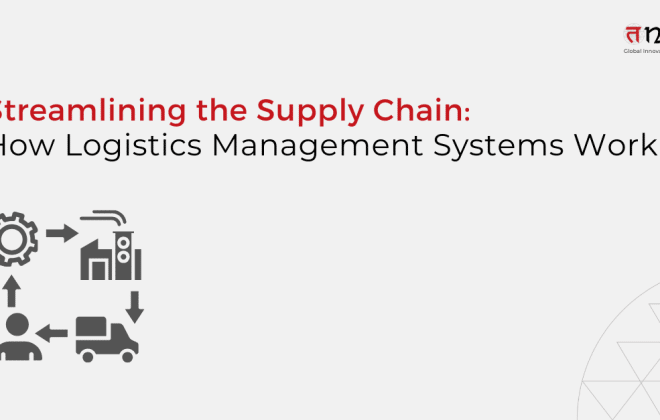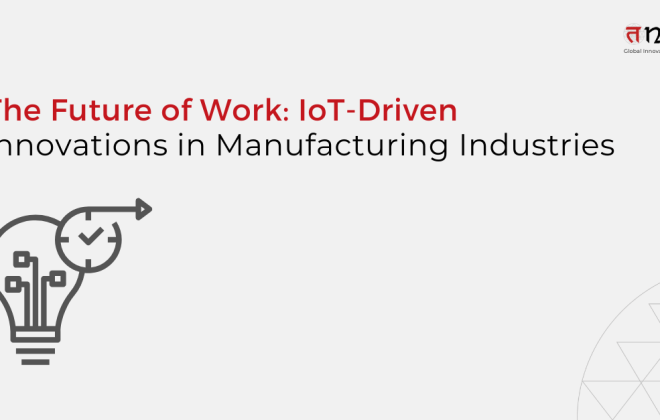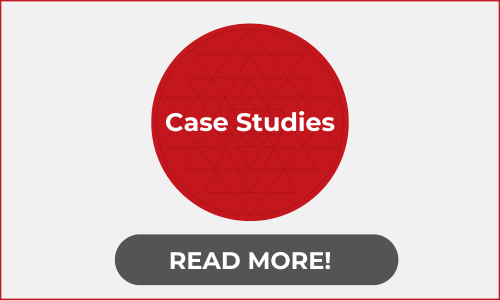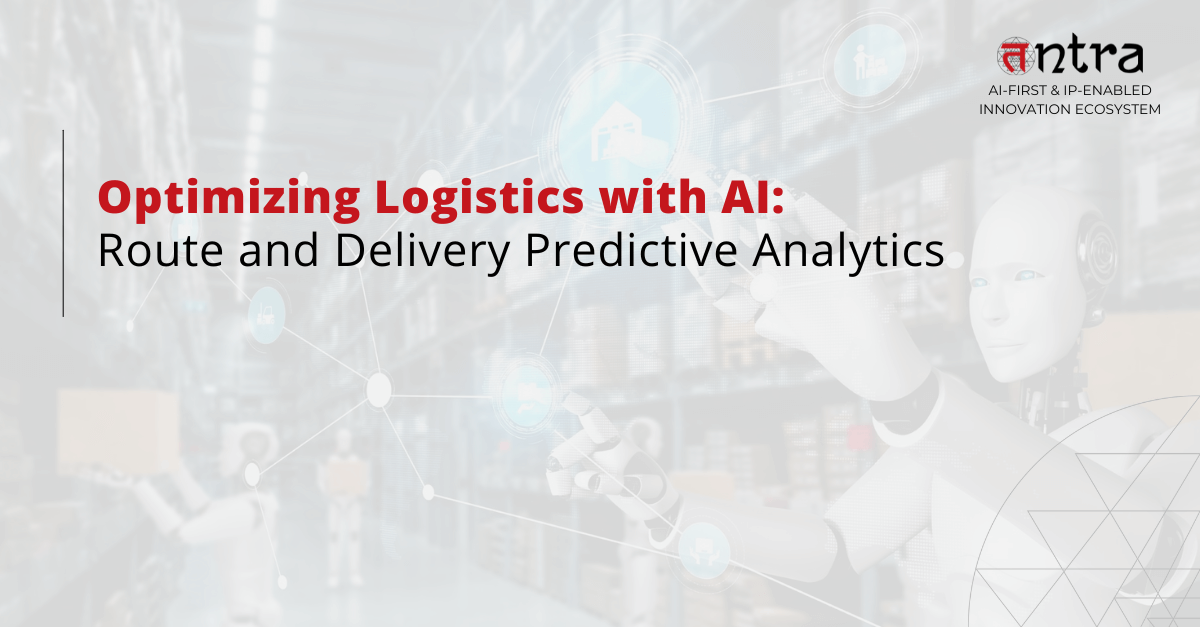
Optimizing Logistics with AI: Route and Delivery Predictive Analytics
Table of Contents
ToggleIn today’s fast-paced logistics landscape, AI in logistics has become a competitive advantage rather than a futuristic concept. Logistics companies are now leveraging logistics predictive analytics, AI route optimization, and delivery predictive analytics to streamline routes, reduce costs, and ensure timely deliveries.
This article explores how logistics optimization with AI enables smarter decision-making — from demand forecasting and route planning to real-time delivery tracking and autonomous delivery systems. Learn how AI-driven logistics optimization can enhance delivery accuracy, improve customer satisfaction, and transform your supply chain into a data-driven powerhouse. Continue reading to learn more.
Today customers expect speed, accuracy, and transparency in logistics, and it has become a competitive battleground. If you’re a decision-maker in operations, supply chain, or logistics, you’ve likely heard a buzz around AI in logistics and how it can transform your delivery, routing, and planning. But how, exactly, do you turn that buzz into concrete gains? This is where logistics predictive analytics, AI route optimization, and delivery predictive analytics come in.
In this article, we’ll walk you through how logistics optimization with AI works in practice, the core technologies behind it, challenges to watch out for, and how to get started.
Why Predictive Analytics Matters in Logistics and Supply Chain Optimization with AI
Today’s customers expect speed, accuracy, and transparency. For decision-makers in logistics and operations, the question is no longer if but how to use artificial intelligence in supply chain to improve performance.
AI in logistics helps organizations anticipate bottlenecks, optimize vehicle movement, and make faster, data-backed decisions. Logistics predictive analytics converts historical data into foresight—forecasting demand surges, identifying potential route delays, and improving overall logistics management efficiency.
A 2024 study on AI-powered predictive analytics in supply chains found that combining machine learning and real-time data reduces delays, enhances route efficiency, and cuts operational costs. This proves how predictive logistics solutions bridge the gap between past performance and future efficiency.
The Core Components of AI-Driven Logistics Optimization
Here’s how AI-driven logistics optimization works under the hood:
1. Data Collection & Integration
Gather unified, high-quality logistics data from deliveries, GPS systems, weather, and warehouse operations. This enables data-driven logistics and ensures your AI logistics automation platform has reliable inputs.
2. Machine Learning & Predictive Models
AI models can:
- Forecast demand and orders
- Predict travel times under different traffic conditions
- Estimate delivery windows accurately
- Anticipate vehicle faults or demand surges
This underpins AI-based predictive delivery systems that drive operational intelligence.
3. Route Optimization & Decision Engine
Using predictions, AI route optimization algorithms balance driver constraints, traffic, and delivery windows. This results in AI-driven route planning and AI transport management that minimizes cost while maximizing delivery performance.
4. Real-Time Tracking & Feedback Loops
Real-time AI logistics tracking compares actual vs predicted performance and adjusts routes dynamically. This adaptability is key for AI-powered logistics software used in modern transportation management systems (TMS).
5. Execution & Actuation
With IoT integration, smart logistics systems execute optimized plans—automatically adjusting for live road conditions and vehicle health.
6. Complementary AI Modules
Add-on AI tools such as:
- AI in warehouse management
- AI-based inventory management
- Autonomous delivery systems
These create an integrated intelligent logistics solution for a truly smart, scalable supply chain.
How AI Route Optimization and Delivery Predictive Analytics Work in Practice
Predicting Delivery Performance
Using delivery predictive analytics, companies can predict delivery times based on traffic, weather, driver behavior, and road data. For instance, models can forecast delivery durations with confidence intervals—enabling predictive route optimization for faster delivery.
Optimizing Routes Dynamically
AI tools continuously analyze conditions and reroute vehicles in real-time. This ensures efficient last-mile delivery optimization, cutting delays and improving reliability across AI in transportation operations.
Monitoring and Adapting
Smart logistics with AI ensures that deviations are instantly detected. The system learns from these events and continually refines itself, creating a self-learning supply chain that adapts in real time.
To bring this alive, let’s walk through how delivery predictive analytics and AI route optimization interplay in a real logistics operation.
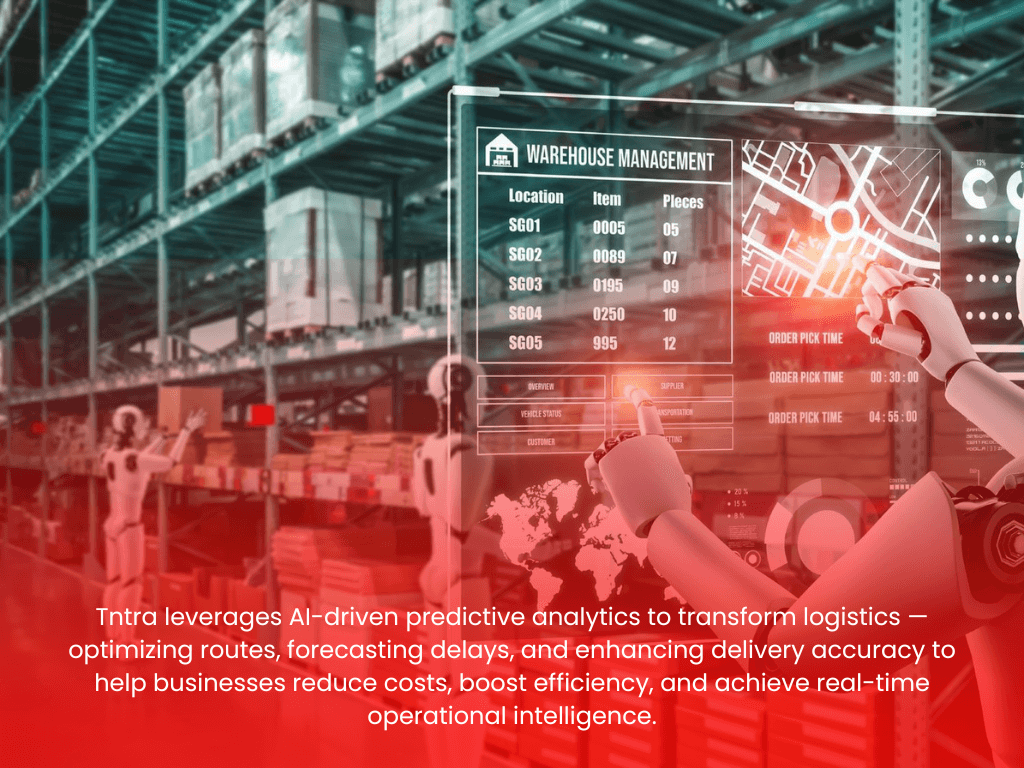
Key Benefits of Intelligent Logistics Solutions Powered by AI
Businesses implementing AI logistics automation and AI-driven route planning typically achieve:
- Cost reduction: Lower fuel, maintenance, and labor costs thanks to better routing and fewer wasted miles.
- Higher capacity & throughput: More deliveries per vehicle per day without adding headcount.
- Improved on-time delivery rates: Better adherence to time windows because predictions + planning are smarter.
- Reduced customer support load: Accurate ETAs and proactive delay notification mean fewer calls and complaints.
- Incremental learning & continuous improvement: Over time, the system becomes more precise.
- Better resource utilization: Vehicles, drivers, and warehouse operations are coordinated more tightly.
- Scalability & agility: You can respond faster to disruptions (e.g. storms, strikes, demand surges).
A notable example: last-mile delivery providers have applied AI to plan routes considering traffic, delivery windows, and driver capacity, achieving fuel savings and denser routing. In some cases, customer service calls dropped sharply thanks to more accurate ETAs.
Case studies show that AI-powered fleet management systems enhance route precision and lead to substantial cost savings—demonstrating how artificial intelligence in logistics drives measurable ROI.
Synergies: AI Logistics Automation & the Wider Supply Chain
AI supply chain management becomes more effective when logistics, inventory, and warehousing systems interact seamlessly.
- AI-based inventory management feeds forecasts to logistics so that stock is prepositioned smartly, reducing rush deliveries.
- AI in warehouse management (robotic pickers, optimized storage, slotting) ensures that once a delivery route is planned, orders are ready at precisely the right time.
- Autonomous delivery systems, drones, robots, self-driving vehicles, can be plugged into route planning engines to automate the “last mile” more deeply. For instance, research into autonomous delivery systems for small neighborhoods is ongoing to route robots safely and efficiently.
- Predictive maintenance of vehicles, another logistics predictive analytics subdomain, ensures fewer breakdowns mid-route.
When combined, these modules enable sustainable, eco-efficient logistics management solutions.
Implementation Challenges in AI Logistics Optimization
Rolling out AI-driven logistics optimization isn’t trivial. Here are the common hurdles and how to plan for them:
| Challenge | Risk | Mitigation / Strategy |
| Data Silos / Poor Data Quality | Garbage in → garbage out | Start with data cleaning, consistent schema, centralized data platform |
| Legacy Systems & Integration | Difficulty merging AI modules with existing TMS or ERP | Use middleware, APIs, phased rollout |
| Model Accuracy & Edge Cases | Predictions may fail for rare events | Use ensemble models, fallback strategies, human override |
| Real-time Performance & Latency | Too slow to reoptimize on the fly | Optimize engineering, edge compute, pruning techniques |
| Change Management | Resistance from planners or drivers | Engage users early, show quick wins, training programs |
| Scalability & Maintainability | Model drift, scaling to more vehicles | Monitor performance, retrain periodically, modular architecture |
| Cost / ROI Uncertainty | High initial investment | Start small (pilot), measure KPIs, reinvest gains |
| Regulation & Safety | Especially for autonomous systems | Comply with local rules, rigorous testing and safety limits |
Also, when integrating autonomous delivery systems, safety, reliability, and public policy become key constraints, not just pure optimization.
One interesting academic case: researchers built AI models for sustainable logistics optimization in the U.S., focusing on reducing carbon emissions while routing. They used a variety of techniques (XGBoost, clustering, neural nets) to optimize route length and time. That kind of eco-aware optimization is an advanced next frontier.
To mitigate these, partner with a trusted supply chain software development company offering technology consulting services, digital transformation solutions, and AI logistics solutions in the Middle East to ensure seamless implementation.
Roadmap: How to Implement Predictive Analytics in Logistics
If you’re a decision-maker considering this shift, here is a suggested path:
- Define use-case & boundaries
Pick a domain: last-mile deliveries, regional route planning, returns logistics, etc. - Audit your data & systems
What data do you already have (delivery logs, telematics, traffic)? Where are the gaps? - Run a pilot
Start with one region or one fleet of vehicles. Build predictive models for that slice and run AI route optimization in a hybrid mode (human + machine). - Measure KPIs
On-time percentage, fuel cost, cost per delivery, number of stops, customer satisfaction. Compare before vs after. - Scale gradually
Expand to more regions, more vehicles. Integrate warehouse & inventory modules next. - Build feedback & model retraining workflows
Make sure your system learns from mistakes and improves over time. - Plan for autonomy augmentation
As autonomous delivery systems prove safe and viable, integrate them into your routing engine. - Governance, safety, ethics
Especially for AI/automated decision-making, keep human oversight and reviewable paths. - Continuous optimization
Over time, fine-tune models, incorporate new data (weather forecasts, social events, supply disruptions).
Future Trends & What to Watch
Looking ahead, here are some trends likely to shape how smart logistics with AI evolves:
- Self-learning supply chains & adaptive AI that adjust strategies in real time (like agentic AI)
- Integration of large language models (LLMs) into supply chain tools, for demand forecasting, anomaly explanation, and decision support.
- Autonomous fleets and drone delivery becoming part of route planning engines; the planning will encompass vehicles + robotics.
- Green logistics optimization, routes designed not just for cost, but for emissions, noise, sustainability.
- Blockchain + AI for transparent, traceable logistics across partners, helping build better predictive models.
- Edge AI / IoT-based decisioning, some predictions will happen on devices near vehicles (rather than in a central cloud) for ultra-low latency.
- Human–AI collaboration will remain critical: AI for recommendations, humans for oversight, exception handling, ethics
Conclusion: Building an AI-Driven Logistics Future
Optimizing logistics with AI through route and delivery predictive analytics is a transformative step toward efficiency, sustainability, and customer satisfaction.
By implementing AI in logistics, AI-driven route planning, and predictive analytics in delivery management, businesses can achieve faster deliveries, reduced costs, and higher transparency.
Let’s build your next-gen logistics system today. Talk to Our Experts →
FAQs
1. What is delivery predictive analytics and how does it improve route planning?
Delivery predictive analytics uses historical delivery data, traffic, weather, and real-time telemetry to forecast travel times and risks. When combined with AI route optimization, it enables planners to choose lower-risk routes, reduce ETA variance, and improve on-time delivery rates.
2. Which data sources are essential for effective AI in logistics?
Critical inputs include historical delivery logs, GPS/telematics, traffic feeds, weather data, warehouse pick times, order windows, and vehicle health. High-quality, unified data powers logistics predictive analytics and ensures accurate AI-driven logistics optimization.
3. How quickly can businesses expect ROI from AI-driven route and delivery optimization?
ROI timing varies by scale and maturity, but many pilots show measurable gains within 3–6 months: reduced fuel costs, higher deliveries per vehicle, and fewer support calls. Starting with a focused pilot (e.g., last-mile or a single region) accelerates ROI for AI in logistics projects.
4. What are the main challenges when implementing AI logistics automation?
Common hurdles are data silos, legacy TMS/ERP integration, model performance during rare events, and change management for drivers/planners. Mitigations include phased rollouts, middleware/APIs, ensemble models with fallbacks, and strong user training.
5. Can AI route optimization handle last-mile complexity and autonomous delivery systems?
Yes — modern AI route optimization and predictive logistics solutions are designed to manage last-mile constraints (tight time windows, customer preferences) and can integrate autonomous delivery systems (drones/robots) as they become operational and regulatory frameworks allow.
